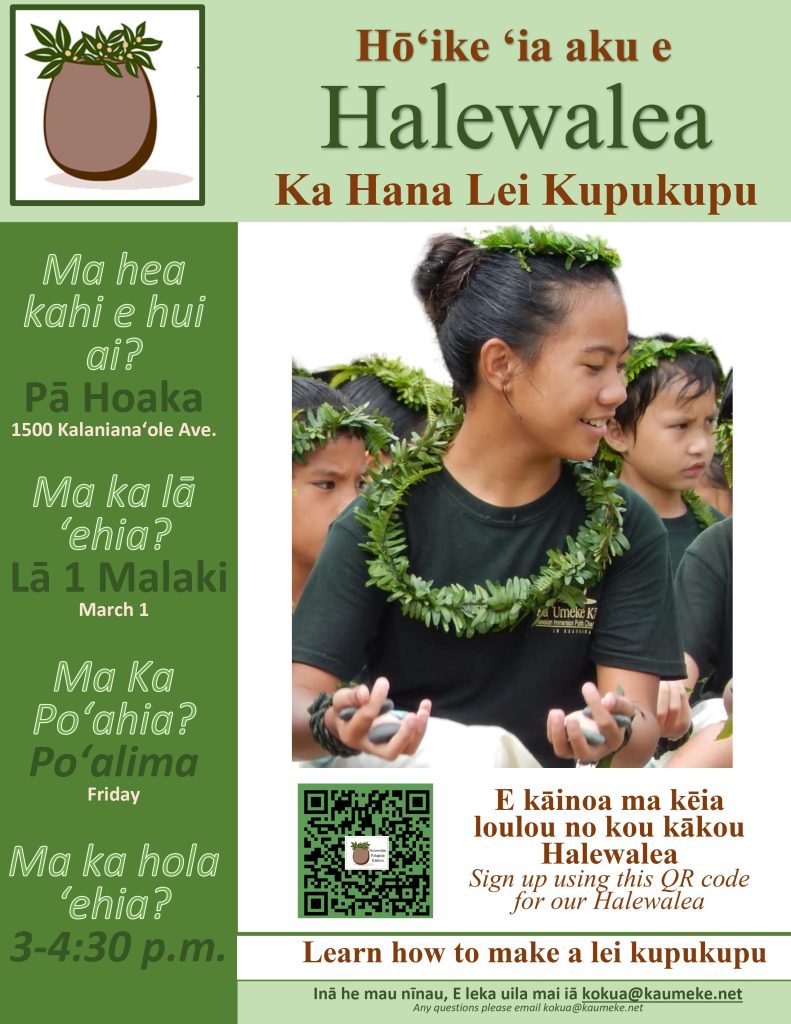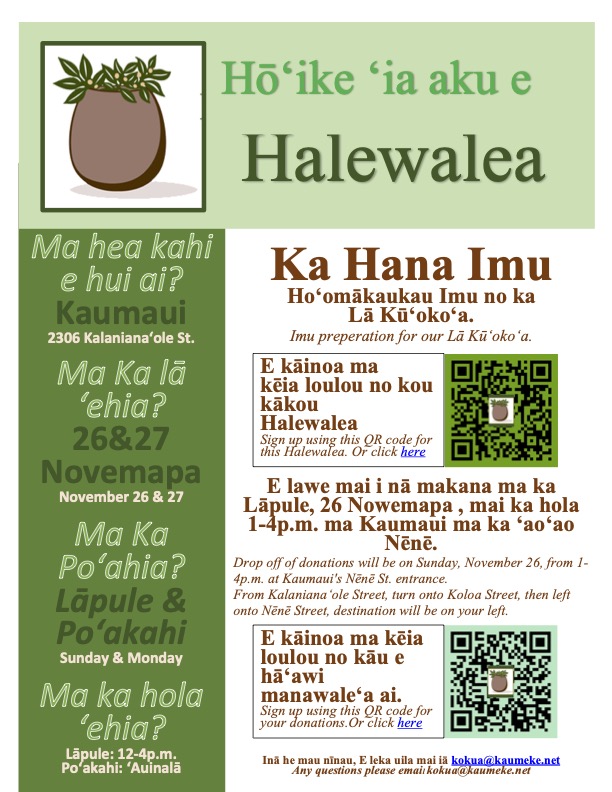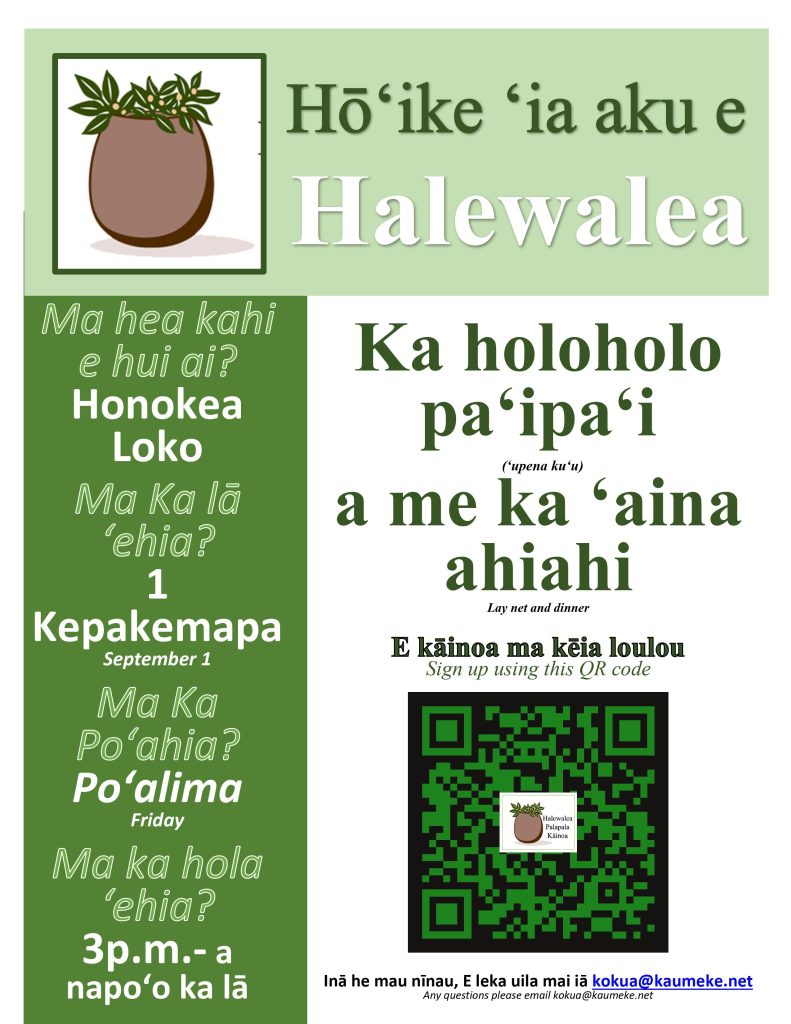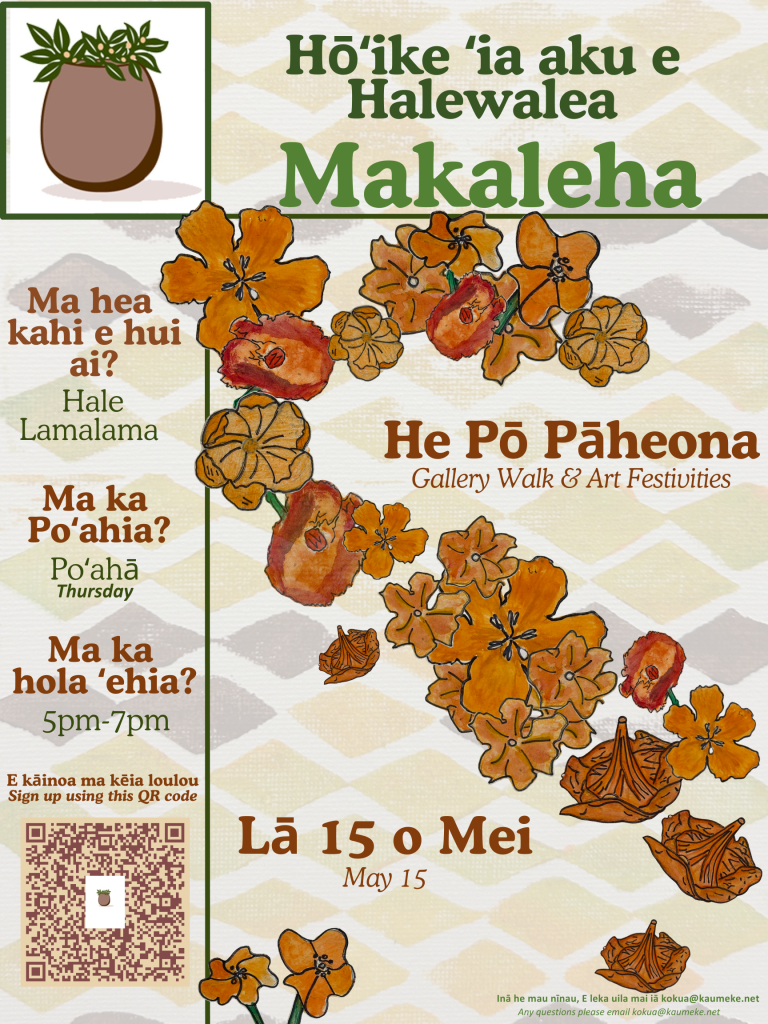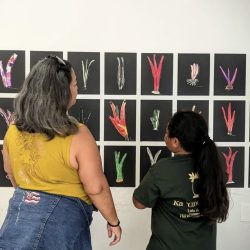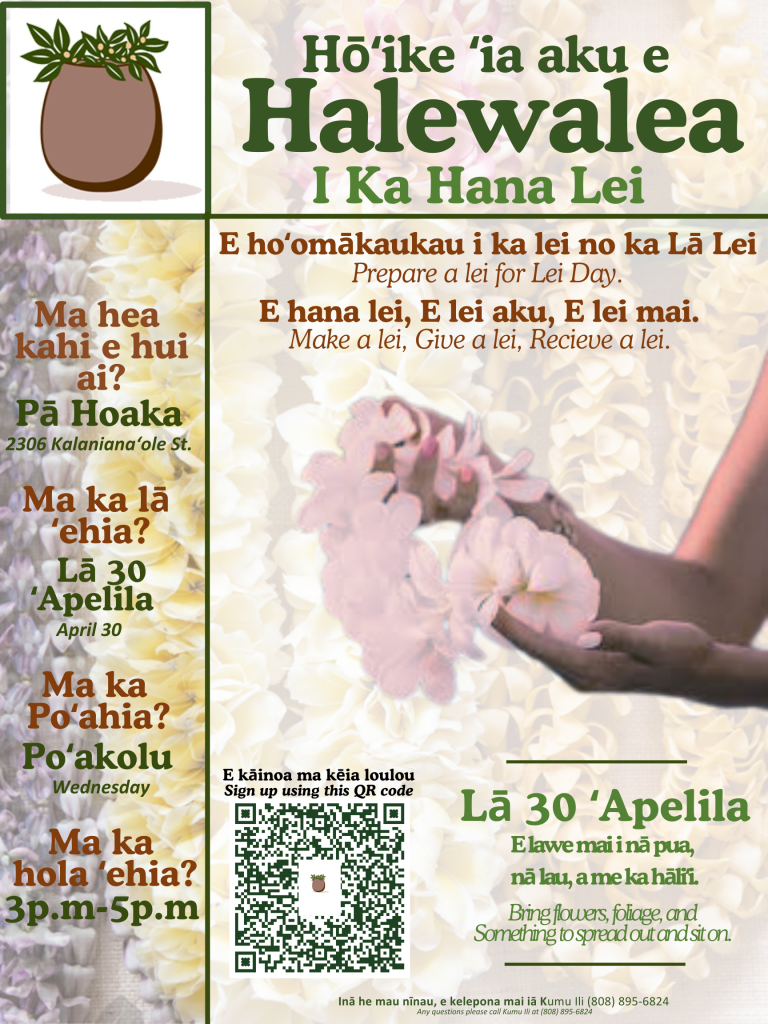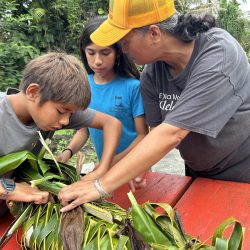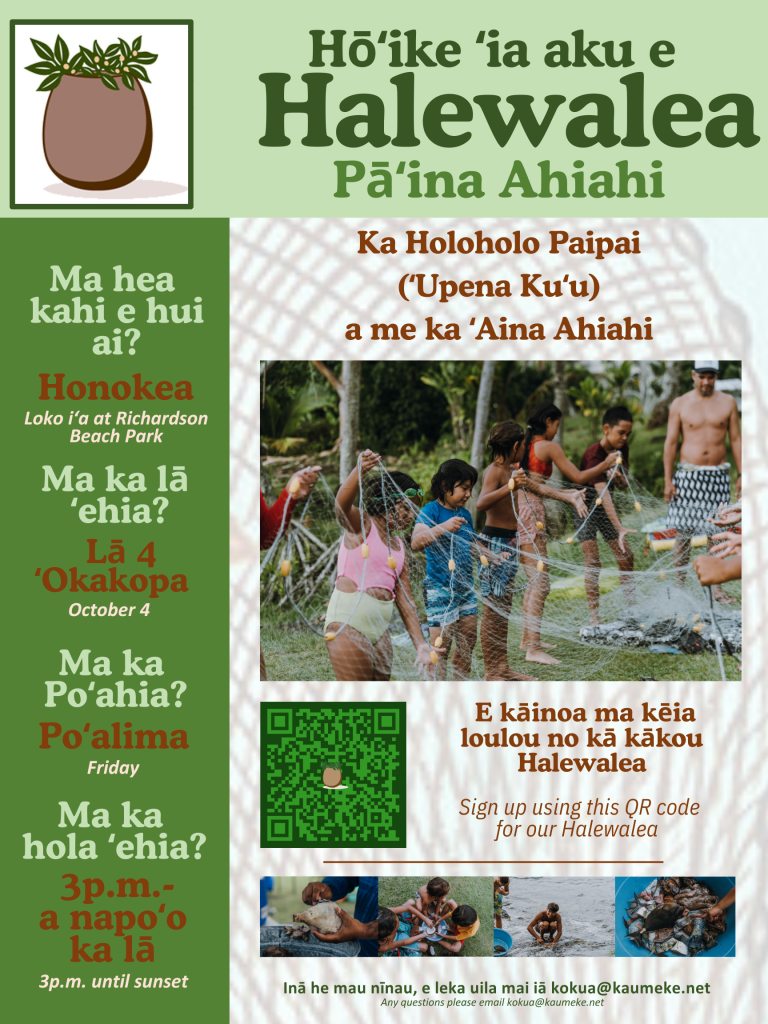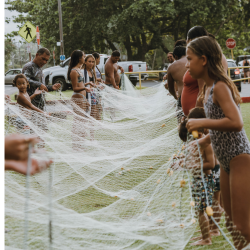Halewalea
Walea: So familiar that one does a thing without effort, as an aquired skill.
E hana ā walea
Halewalea
Halewalea Makahiki Kula 2024-2025
Hua ʻŌlelo
Pāheona
kik Art, artwork; fine arts.
Kiʻi pena
n. Painting. Lit., painted picture
Kiʻi kuʻikepa
Sculpture
Dye colors:
ʻŌlenalena (yellow); puakai (red); nao (dark red); pōkohukohu (made of noni root); ʻākala (raspberry or thimbleberry juice)
Hōʻawa
To extract dye colors
Kiʻi
n.• image, picture, photograph, drawing, diagram, illustration, likeness, cartoon,
• statue, idol, doll, petroglyph;
• features, as of a face
Peni
Pen. Writing instrument.
Penikala
Pencil
Hulu pena Paint brush
Pepa
Paper
Hua ʻŌlelo
Lei wili
n. A lei that is not strung (kui): the leaves or flowers are entwined about each other, as maile leis.
Lei hilo (Lei Hili)
n. A plaited lei, as of ferns and maile but without leaves.
Lei poe.poe
n. Lei with flowers strung on stems or sides of flowers.
Lei haku
n. Braided lei, as of ferns and flowers.
Lei poʻo
n. Lei worn on the head (poʻo).
Lei ʻā.ʻī
n. Any lei worn on the shoulders, as maile; necktie, scarf, neckerchief. Fig., beloved person, especially child or mate. Lit., neck lei. See pōhākiʻikiʻi.
Kū.peʻe
1. nvt. Bracelet, anklet; fetters, manacles, handcuffs; to put or tie on bracelets, anklets, fetters; to hogtie. Kūpeʻe hoaka, bracelet as made of crescent-shaped hog's tusks. Kūpeʻe hoʻokalakala, bracelet of boar's tusks; lit., sharp bracelet. Kūpeʻe palaoa, bracelet of whale teeth, or a single pierced whale tooth on a string worn about the wrist.
Kaula
n. Rope, cord, string, line, strap, thong; lash or stroke, as of a whip
Lā.ʻī n. Ti leaf
Hua ʻŌlelo
Kalo: Taro (Colocasia esculenta), a kind of aroid cultivated since ancient times for food, spreading widely from the tropics of the Old World. In Hawaiʻi, taro has been the staple from earliest times to the present, and here its culture developed greatly, including more than 300 forms. All parts of the plant are eaten, its starchy root principally as poi, and its leaves as lūʻau.
ʻUala: Sweet potato (Ipomoea batatas), a perennial, wide-spreading vine, with heart-shaped, angled, or lobed leaves and pinkish-lavender flowers. The tuberous roots are a valuable food, and they vary greatly in many ways, as in color and shape. Though of South American origin, the plant has been a staple food since ancient times in many parts of Polynesia, as well as in some other regions.
Maiʻa: All types of banana. Originally the banana was introduced by the Hawaiians, and native varieties were developed, some of which are still used. When the white man came, about 70 different kinds were known; today, only about half that number. These are mainly varieties of Musa xparadisiaca, especially the varieties sapientum and normalis. Some kinds are eaten raw, others cooked. Bananas were taboo to women except certain ones, as maiʻa iho lena and maiʻa pōpō ʻula, with yellow flesh. Bananas are not mentioned in songs because of unfavorable connotations: see līlā, ʻolohaka. It was considered bad luck to dream of bananas, to meet a man carrying bananas, or to take them in fishing canoes.
Lau: Leaf, frond, leaflet, greens
Lāʻī: Ti leaf
Imu: Underground oven.
Hua ʻŌlelo
Holoholo: A net into which fish run after being frightened. To fish with this net. Sometimes holoholo is used instead of saying “going fishing” because it is believed that saying going fishing will cause you to catch no fish.
Paʻipaʻi: To strike with the palm of the hand; to clap.
ʻUnahi: Scales of a fish; scaly; to scale
Wahi pana: Celebrated, noted, or legendary place; to be such
Paipai: Agitator; to rouse; to excite.
Kaha: To scratch, mark, check, draw, sketch, cut, cut open or slice lengthwise, as fish.
Upena Kuʻu: Gill net, set net
Halewalea Makahiki Kula 2023-2024

